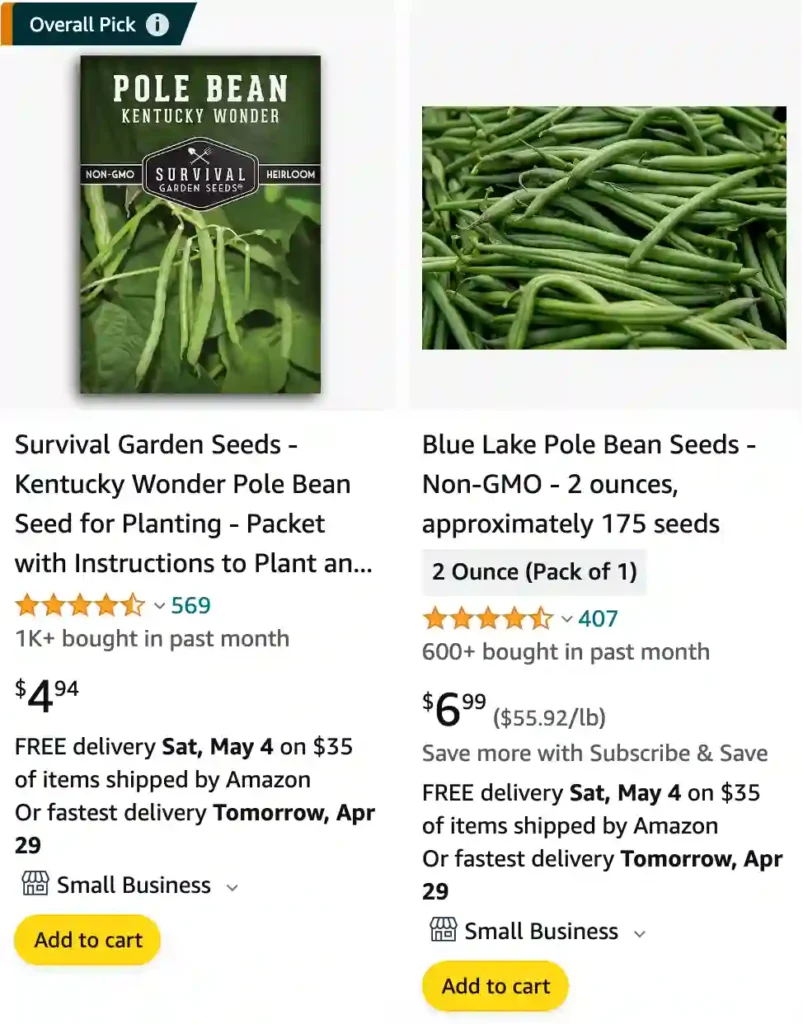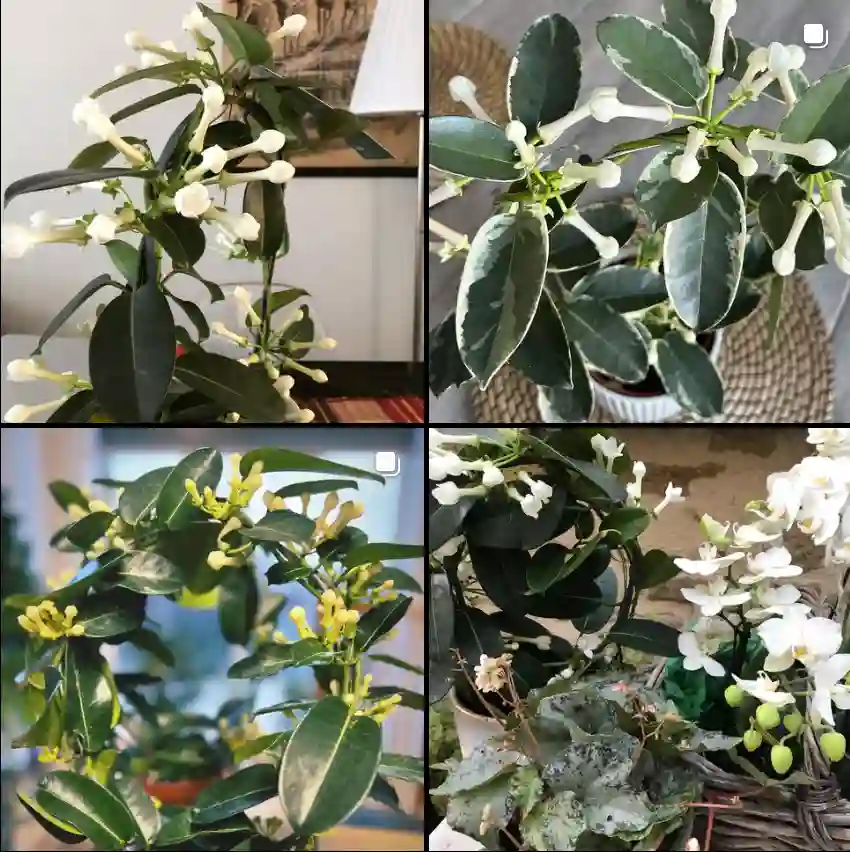
What are pole beans?
Pole beans are the best kind of beans, in my opinion! They climb like crazy and grow these long, beautiful pods. I’ve always had a lot of success with them – I think the key is building a really sturdy trellis or support. When I lived in the city with a small balcony garden, I even grew them in big pots with tall bamboo poles. They produced so many beans that I started giving them away to my neighbors! I usually grow green beans, but I’ve been wanting to experiment with some of the purple or yellow varieties.
How to grow pole beans?
Growing pole beans has been one of the most rewarding gardening experiences for me. I love the challenge of setting up trellises in the early spring, with the anticipation of that first harvest. I direct sow the seeds at the base of the supports after the danger of frost has passed and the soil has warmed up. Just a few seeds around each pole is plenty since they grow so vigorously! I keep them well-watered, especially in the heat of the summer, and before you know it, the vines have taken over the trellis and pods are hanging everywhere.
How to cook pole beans?
I’m all about simple preparations when it comes to my pole beans. I want that fresh, crisp flavor to shine through. My favorite way is to steam them until they’re just tender and then toss them with a bit of butter, salt, and lots of freshly ground black pepper. Sometimes I like to add a squeeze of lemon juice to brighten things up. For something a little different, I’ll stir-fry the beans with garlic and ginger; you could even add in some soy sauce for extra depth. But really, there’s something delicious about letting those fresh green bean flavors speak for themselves.
When to plant pole beans?
Since I love the taste of fresh pole beans so much, I want to extend the growing season as long as possible. I usually do two plantings – the first goes in the ground after the last threat of frost in the spring, and then I’ll do a second planting around mid-summer. This way, I often have a fall harvest while I’m still enjoying the end of the summer crop. Of course, planting times can vary based on your specific climate, so it’s always good to check local resources and figure out the optimal timing for your area.
When to harvest pole beans?
The hard part about growing pole beans is knowing when to start picking! You want to harvest them when the pods are long and slender, with just the slightest hint of the beans inside. If you wait too long, the pods get tough and stringy, and the beans themselves get too big. I learned the hard way a few seasons ago – being on vacation for a week left me with a tangle of overripe beans sadly unfit for eating. Now, I try to check on them every couple of days, especially during peak production. I give them a gentle squeeze and pick the ones that are firm but slightly pliable.
How tall do pole beans grow?
Get ready for a jungle! Pole beans grow incredibly fast, reaching amazing heights if you give them the support. The tallest I’ve ever grown were probably about eight feet tall. I had a large cattle panel arched like a tunnel, and those beans clambered over the whole thing in what felt like a matter of weeks. If you’re short on space, pole beans are perfect; it’s incredible how much produce you can get from a small footprint when they grow vertically. Just remember to provide sturdy support, so the wind doesn’t knock everything over!
How to prepare pole beans?
Preparing pole beans is a simple affair – I don’t like overcomplicating things with these fresh beauties. Before I do anything, I always admire them for a second – just picked, they have this vibrant green color. First, I trim off the tough stem end with a quick snip. If there’s a string down the side, like sometimes happens with older beans, I pull that off too. Then it’s just a matter of whether I want to leave them whole or cut them into smaller pieces. For a side dish, I usually cut them in half or thirds, but if I’m adding them to a stir-fry or soup, I’ll slice them up even smaller.
When to pick pole beans?
Picking pole beans becomes part of my summer routine – it’s almost meditative. The key is to pick them regularly, while the pods are still young and tender. I like to do a sweep of my bean trellis every couple of days, picking anything that’s about the length of my finger. The smaller the pod, the sweeter and less fibrous! I love seeing the basket quickly fill up, overflowing with bright green bounty. Plus, the more often you pick, the more beans the plants will produce, so it’s a win-win situation!
How far apart to plant pole beans?
When I’m planting pole beans, I like to imagine what it’ll be like when they’re fully grown – a lush, green jungle! I find that giving them a bit of breathing room is key for good air circulation and easy harvesting. Around the base of each pole or support, I plant about 4-6 seeds, spacing them a few inches apart. If they all germinate, I’ll thin them out later so only the strongest survive. It’s a bit of a gamble, but I’m usually more successful giving a bunch of seedlings a shot rather than carefully planting a couple at a time and hoping they sprout.
Are pole beans green beans?
Yes, pole beans are a type of green bean! The main difference is in how they grow. You’ve got your bush beans, which grow low to the ground in a compact bush, and then you have pole beans, which are climbers. Pole beans need staking or a trellis, but they produce loads of beans. Personally, I prefer pole beans since they’re so productive, and I love the vertical element they add to the garden – it’s so fun to watch them take off! But really, both types of green beans are delicious and rewarding to grow, just a matter of preference and space!
How deep to plant pole beans?
When I plant pole beans, I aim for about an inch deep in the soil. I want them deep enough to get a good start, but not so deep that those little seeds have a hard time pushing up towards the sunlight. It’s kind of like I’m giving them their first boost towards creating that gorgeous, climbing jungle! Sometimes I make a shallow furrow with my finger, and gently nudge the beans inside, then cover them lightly with soil. It’s a simple task, but always fills me with excitement for the long growing season ahead.
Are pole beans stringless?
Many pole bean varieties are stringless, but not all of them! I’ve found that newer varieties tend to have that stringless quality, which makes prep time a breeze. But sometimes, especially with heirloom beans or those you might find at a farmer’s market, you might get that tough string along the seam of the pod. It’s always best to check the seed packet if you’re buying those, or ask the farmer if you’re not sure. Personally, I don’t mind the older “string” kind – there’s a certain nostalgic charm to snapping the ends off and removing the strings before cooking.
If i die, water my plants!



